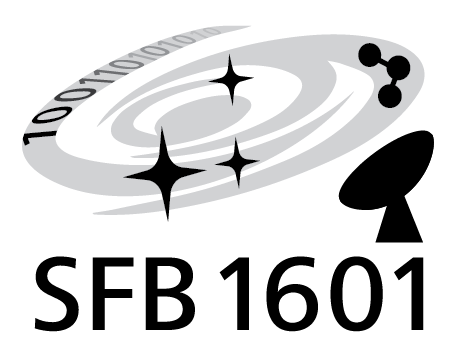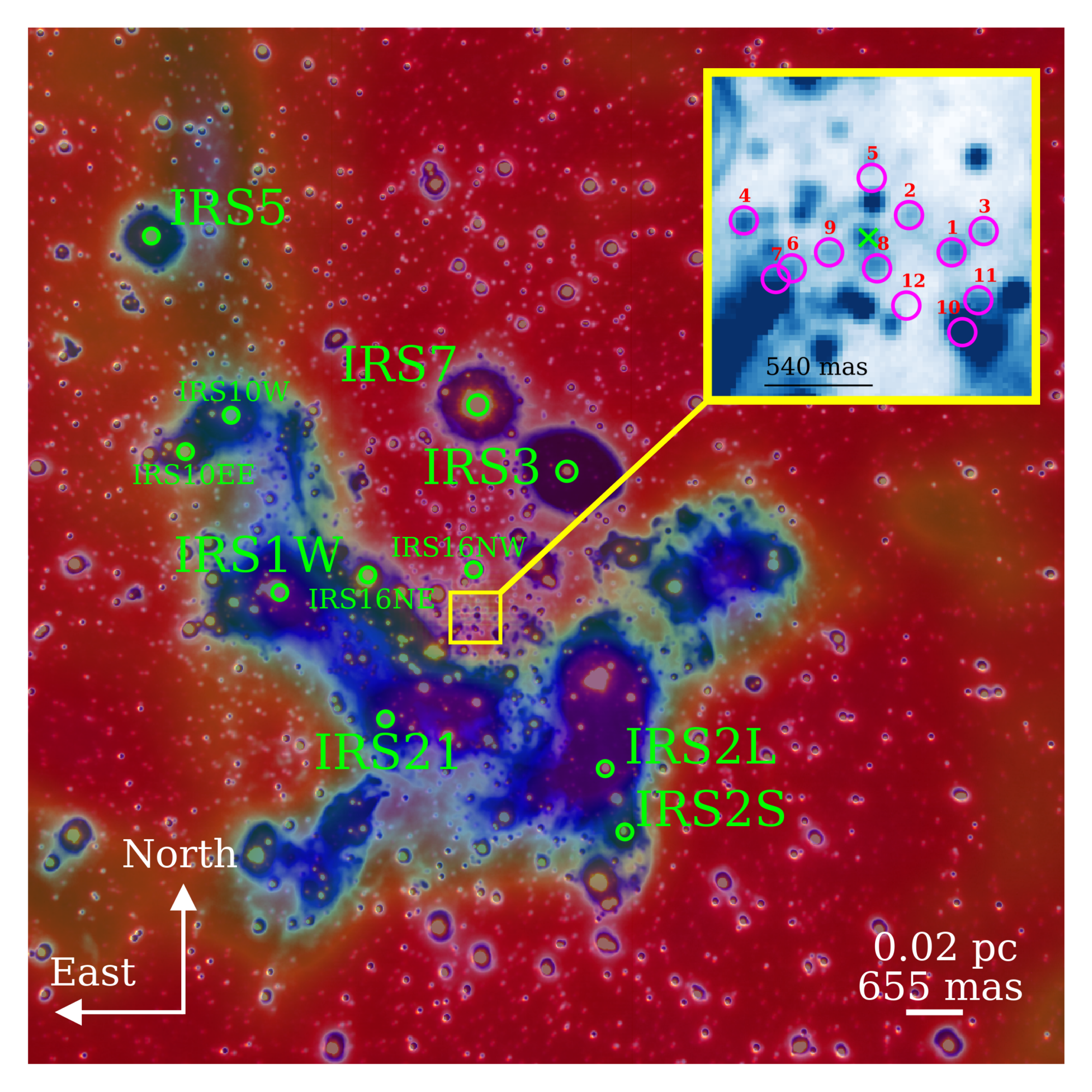High-speed baby stars circle the supermassive black hole Sgr A* like a swarm of bees.
Publication Highlight from Florian Peißker
A&A news: https://www.aanda.org/2024-press-releases
UoC-article: https://portal.uni-koeln.de
The Near- and Mid-infrared observation of dusty sources in the S cluster, which harbors the supermassive black hole in the center of our galaxy, Sgr A*, is accompanied by a discussion about their nature. The current study, published today in A&A, aims to explore the Keplerian parameters of these dusty S cluster members orbiting Sgr A* and analyze their orbital distribution. The results indicate a clear disk-like pattern following the arrangements of the main-sequence cluster members, suggesting a common formation process for the young dusty sources. Based on the multi-wavelength photometric analysis, the study found strong indications that suggest that the dusty sources have a stellar nature consistent with the spectral energy distribution of Young Stellar Objects. The nature of the dusty sources and their organized arrangement around Sgr A* are unexpected and shed light on unexplored star formation processes in the high energetic radiation environment of the supermassive black hole.
Published in A&A (2024)
Context: The observation of several L-band emission sources in the S cluster has led to a rich discussion of their nature. However, a definitive answer to the classification of the dusty objects requires an explanation for the detection of compact Doppler-shifted Brγ emission. The ionized hydrogen in combination with the observation of mid-infrared L-band continuum emission suggests that most of these sources are embedded in a dusty envelope. These embedded sources are part of the S-cluster, and their relationship to the S-stars is still under debate. Until now, the question of the origin of these two populations is vague, although all explanations favor migration processes for the individual cluster members.
Aims: This work revisits the S-cluster and its dusty members orbiting the supermassive black hole Sgr A* on bound Keplerian orbits from a kinematic perspective. The aim is to explore the Keplerian parameters for patterns that might imply a non-random distribution of the sample. Additionally, various analytical aspects are considered to address the nature of the dusty sources.
Methods: Based on the photometric analysis, we estimated the individual H − K and K − L colors for the source sample and compared the results to known cluster members. The classification revealed a noticeable contrast between the S-stars and the dusty sources. To fit the flux-density distribution, we utilized the radiative transfer code HYPERION and implemented a Young Stellar Object Class I model. We obtained the position angle from the Keplerian fit results, and additionally, we analyzed the distribution of the inclinations and the longitudes of the ascending node.
Results: The colors of the dusty sources suggest a stellar nature consistent with the spectral energy distribution in the near and mid-infrared domains. Furthermore, the evaporation timescales of dusty and gaseous clumps in the vicinity of Sgr A* are much shorter (≪ 2 years) than the epochs covered by the observations (≈15 years). In addition to the strong evidence for the stellar classification of the D-sources, we also find a clear disk-like pattern following the arrangements of S-stars proposed in the literature. Furthermore, we find a global intrinsic inclination for all dusty sources of 60 ± 20◦, implying a common formation process.
Conclusions: The pattern of the dusty sources manifested in the distribution of the position angles, inclinations, and the longitudes of the ascending node, strongly suggests two different scenarios: the main-sequence stars and the dusty stellar S-cluster sources share the common formation history or migrated with a similar formation channel in the vicinity of Sgr A*. Alternatively, the gravitational influence of Sgr A* in combination with a massive perturber, such as a putative IMBH in the IRS 13 cluster, forces the dusty objects and S-stars to follow a particular orbital arrangement.

